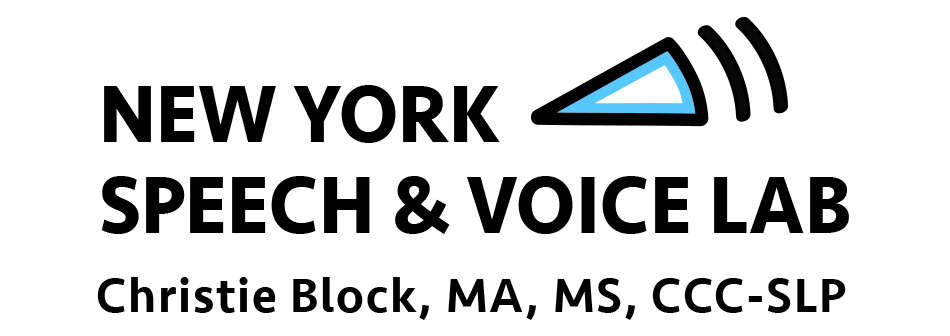Straw phonation, or making sound through a straw, is a common therapeutic exercise for vocal health problems such as vocal strain or tired voice. These symptoms can occur for a number of reasons, including strenuously modifying the voice for gender presentation, starting testosterone, speaking too much or too little, or speaking loudly for long periods. Having a poor audio set up on Zoom calls can sometimes lead to pushing the voice too hard as well.
-- How does it work? Straw phonation is a type of semi-occluded vocal tract (SOVT) exercise, meaning that it partially blocks the space of the upper airway during sound production. In this way, it creates resistance, sending energy back towards the vocal folds and establishing more balanced air pressure, which makes it easier for the vocal folds to vibrate efficiently, with less work. In an earlier blog post, I discussed lip trills, which is another excellent SOVT exercise that requires no props, but the straw has an added effect in that it lengthens the vocal tract (since the sound exits from the tip of the straw rather than your lips) and narrows the space of the upper airway (since the diameter is smaller than your mouth). Because of this, it can have varying effects depending on the size and length of the straw. SOVT exercises, when done properly, could potentially result in immediate improvement in vocal quality, power, endurance, and general ease in speaking or singing or manipulating the voice to reach and maintain different pitches, whether higher or lower.
-- How do you do it? Don't worry, you don't have to be a singer! You just need to be able to hold a note for a few seconds or hum a simple tune. Here are some options. Take a regular-sized straight straw, and…
Blow "hoo" through the straw at a straight easy middle pitch for 8-10 seconds. And/or,
Blow the Happy Birthday song or Twinkle Twinkle Little Star or some other easy tune through the straw. Don't mouthe the words or use your tongue. Just blow "hoo" for every note of the song. And/or,
Blow "hoo" through the straw with varying pitch like an ambulance siren or revving of a motorcycle for 8-10 seconds. And/or,
After doing any of these exercises above in an easy middle pitch range, try them in a slightly higher or lower pitch range if your goal is to modify your range for speaking or singing. Go slowly to prevent voice breaks.
With each of these exercises, try to achieve the same effort as you would with your normal/habitual voice, not louder or quieter, and with easy effort, no hard blowing or pushing. Check that you are actually blowing air through the straw by putting your hand up near the end of the straw and feeling for air on your hand. You can also test that the air is appropriately exiting the straw rather than your nose by holding your nose while you blow. Or are you dizzy? Don't blow as hard or as long. If you feel you are doing it right, and it sounds and feels good after doing one or more of these exercises for a total of no more than 2-3 minutes, you can do it again for 2-3 minutes periodically throughout the day to relieve your vocal health symptom. You could also do it at the beginning of the day as a vocal warm-up, or before doing other voice practice. If you continue to experience problems, consider an online or in-person consultation with a voice-specialized speech-language pathologist or laryngologist.
Happy blowing!

